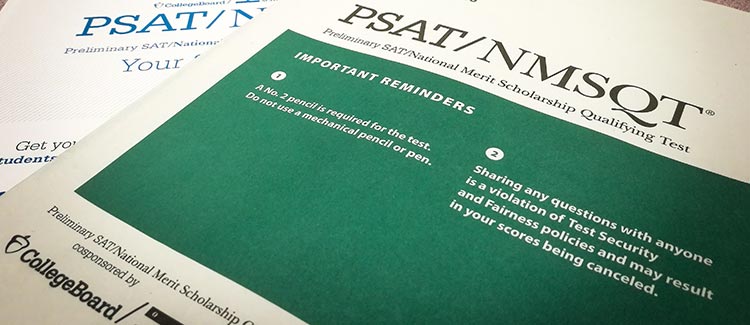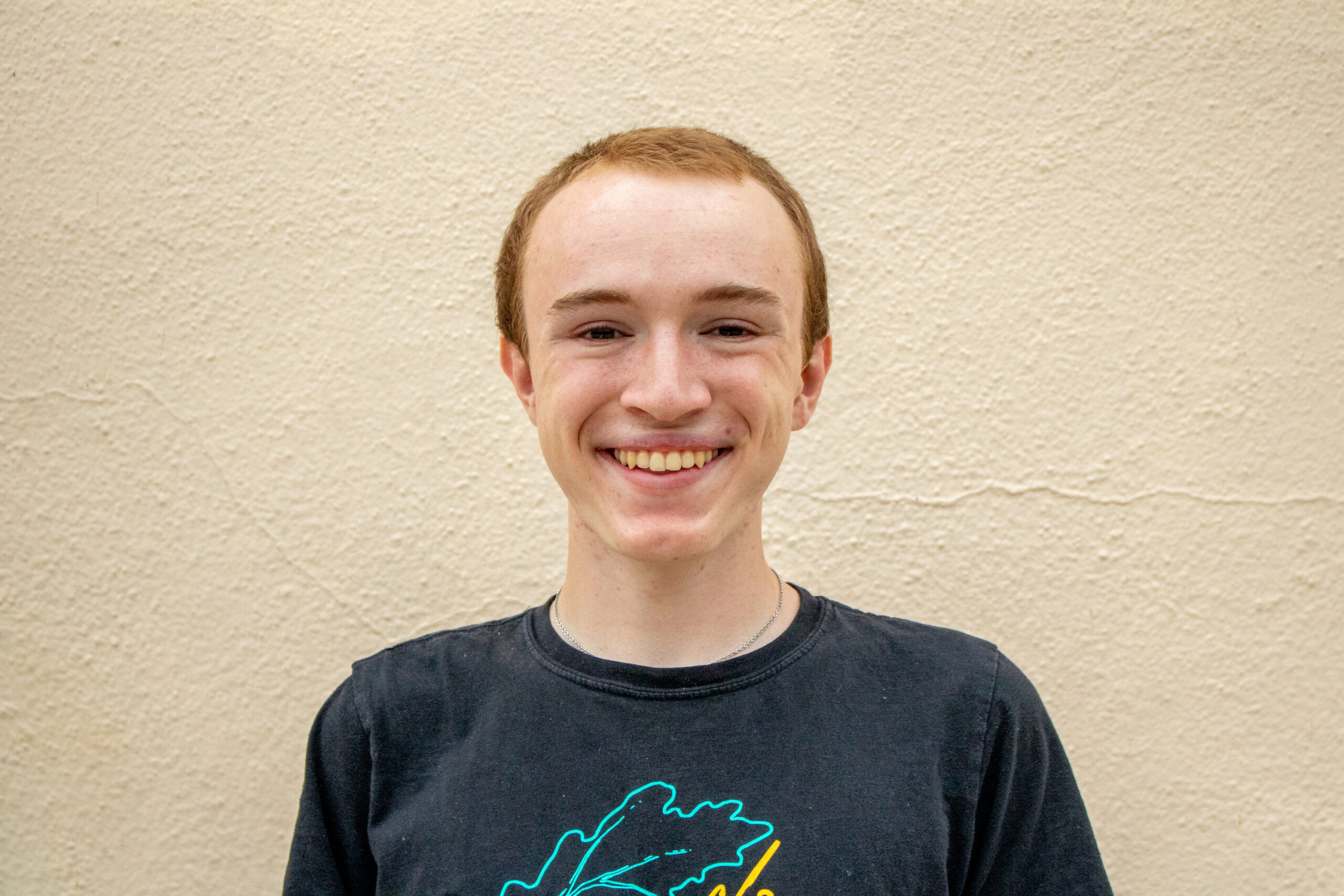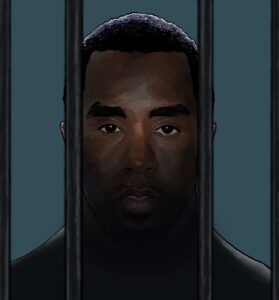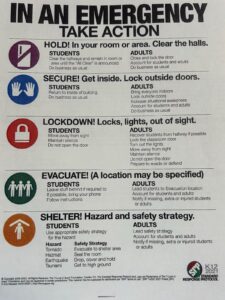On the uncharacteristically cold morning of Tuesday, January 26, 84 juniors arrived on campus at Santa Barbara High School, wearing masks and staying six feet apart, to take the Preliminary SAT. The logistical feat of proctoring a standardized test during a pandemic took place on a date added by the Collegeboard after certain schools including those in the Santa Barbara Unified School District were unable to administer the test in October when it usually takes place. Interestingly, Covid cases are actually higher in Santa Barbara now with the LA Times reporting that over 1% of the population has been infected in the last two weeks. But given its role of preparing students for the SAT and qualifying them for the National Merit Scholarship, the school decided it was worth it to move forward with its plans. Daniel Dupont, Assistant Principal for the 11th grade, who oversaw the administration of the test, said that given all of these extraordinary circumstances, “it went about as smoothly as it could have gone.”
Although there have been numerous cohorts for athletics, special education, and the arts since the fall, this is by the far the most students that have been on campus for such a long period of time since school first shut down last March. In order to limit exposure, they were split across 19 classrooms which each had a proctor who was tapped from school district staff. Furthermore, students who were already coming to campus in cohorts had to be grouped together with people already in their cohort. In normal years, there would only be 3 classrooms for all of the juniors in the school.
Standardized testing is of course a very risky affair as it involves many students sitting together indoors for an extended period, the very types of activities that the CDC warns can turn into super-spreader events. To mitigate these risks, standard Covid safety protocols were taken as well as some extra protocols for this specific test. Specifically, students were required to wear masks and had their desks spaced six feet apart during the duration of the test. Windows were also opened to provide circulation despite the cold weather on the day of testing. Furthermore, parents were required to fill out a form before the test confirming that their child did not have any symptoms of Covid-19 and that they had not been in contact with anyone outside of their household or travelled out of the area in the 14 days before the test administration. In total, Dupont said that 111 juniors signed up for the test, but the discrepancy with the 84 people who actually took the test was a result of some students who had recently travelled and others who simply didn’t show up on the day of the test. Both of these numbers are substantially less than the almost 550 juniors who attend Santa Barbara High School.
Given how few people were able to and chose to take the PSAT, the National Merit Scholarship Corporation provided an alternative qualification method for the scholarship which is awarded to about 50,000 students annually. Unfortunately, this method is based on getting a qualifying score in the actual SAT before June. With the slow pace of vaccinations and still high case rate in Santa Barbara, Dupont said that, personally, this alternative method sounded “disingenuous,” and regarding if the SAT will be administered in Santa Barbara before that deadline, he stated, “I don’t see it happening in the foreseeable future. I certainly hope that we’ll be able to figure out something.”
The SAT and the ACT are both tests that are usually required for college admissions but current Seniors and Juniors have been unable to take them in Santa Barbara since school closed down last March. Whereas Santa Barbara High School directly administers the PSAT, these tests cannot be done at Santa Barbara High School because they are directly proctored by their respective organizations and therefore require a civic use permit. Currently, the school district is not allowing any of these permits which are also given to groups such as churches that meet on district property. Over the course of the last few months, students have continued to be able to sign up on the Collegeboard website for testing at Santa Barbara High School, but each month’s test has been successively cancelled.
Because of the difficulty with testing during the pandemic, U.S. News reports that “more than 1,225 colleges and universities have test-optional policies in place for fall 2021 applicants.” However, many of these schools will still take a test-score as a supplement to an application and some schools are still requiring scores to be submitted. This also only applies to current seniors who may have never had the opportunity to take the test but leaves the fate of current juniors who may need to take the test much later than usual up in the air. An exception for juniors, however, is the University of California system which has become test-optional all the way until 2024 and plans to introduce its own test in 2025 instead of the SAT or ACT. Additionally, the California State University system has gone fully test-blind this year and these two school systems tend to make up the majority of destinations for Santa Barbara High School seniors.
The lack of standardized testing and information from the Collegeboard has left many juniors feeling stranded. Junior Class President, Gwen Tormey, who took an SAT prep class over the summer, said that “she hadn’t even bothered signing up for any [tests] because it just feels like a waste of time.” Tormey also didn’t take the PSAT because she had already done so much SAT prep, but she acknowledged that not everyone had been able to have that opportunity. She thought it was good that the school had offered it optionally and felt that the safety precautions that were taken made it a safe enough experience. Luckily for Tormey, her top choice for schools, Columbia University, has decided to go test-optional, but still, she said, “If I have the opportunity to take it I think I will just because I can and I should, but I’m hoping that I don’t even need to.” Dupont agreed with this assessment: “I would encourage students to do it if they can do it safely just because it’s one more thing that makes them stand out.”
Some other students have gone to extreme measures to be able to add a score to their applications despite the lack of testing. Dupont cited someone who earlier in the pandemic had driven up to Sacramento for the SAT, and Tormey mentioned someone she knew who had more recently flown to Colorado and stayed with family friends just to take the SAT in a place that was administering it. Not only does this raise serious questions about equity in college admissions as not everyone can afford to travel out-of-state just for a test, but it is also extremely counterproductive to the goal of mitigating virus spread by not holding the test. Despite her own experience with the test, Tormey still had firm beliefs about standardized testing during the circumstances of the pandemic: “I just don’t think it should be required at any school.”
Another even more difficult logistical question comes in the form of Advanced Placement testing which also helps with college admissions and allows students to skip courses in college. These tests are taken by far more students every year and those in all grade levels, with many people even taking multiple of them. The Collegeboard, which also runs AP testing, is slated to make an announcement next month about alternative testing options. According to Dupont, “There might be an online option, but the Collegeboard has also said it’s not going to be the 45-minute tests.” This was in reference to the condensed online tests given last May near the start of the pandemic which only involved free-response questions. Dupont said it was a “possible avenue” that the school use a similar cohort model as the PSAT for AP Testing if they were to have them in person but that it was pretty unfeasible if Santa Barbara still had so much community spread of the Coronavirus as they would need upwards of 40 proctors for the AP World History test alone.
Despite the setbacks and the challenges still to come, Dupont is looking on the bright side. Regarding Tuesday’s test, he stated that “It was really good to have kids back on campus, it was energizing for everybody.” Meanwhile, regarding the SAT, Tormey said that her current plan as well as the plan of most of her friends is just to wait it out until they are hopefully able to take the test. Standardized testing is just one more thing that used to be a routine part of school life, but has been fundamentally disrupted by a pandemic that has now take over 425,000 American lives. The future of the SAT, ACT, and AP tests in both the short and long term remains unclear but the PSAT has shown a possible model, particularly as cases start to decline. After that, it seems that the question of how useful they are in college admissions and if they should be required at all will be more directly addressed.
[Photo Credit: GreatSchools.org]







Great writing, very informative, much appreciated.